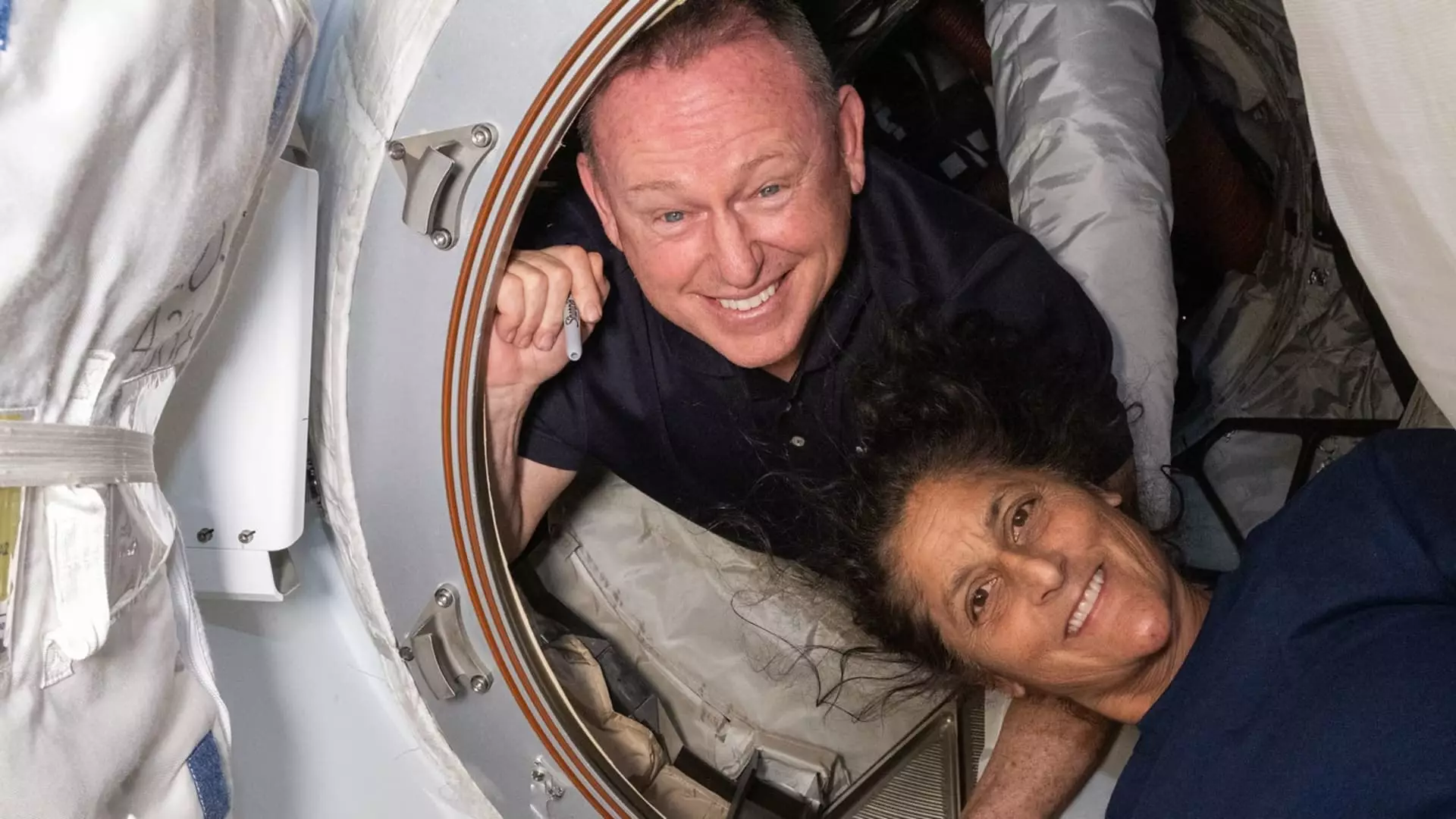The saga of NASA astronauts Butch Wilmore and Suni Williams encapsulates the exhilarating highs and daunting lows of human space travel. What began as a modest nine-day test flight aboard Boeing’s Starliner capsule spiraled into an unexpected nine-month mission at the International Space Station (ISS). This anomaly exposed not only the inherent risks of rocket science but also the fragilities of a space program that prides itself on precision engineering and logistical prowess. The heart of the issue lies in the malfunctioning thrusters of the ill-fated Starliner capsule, ominously dubbed “Calypso.” Rather than returning home as planned, the astronauts were caught in a bureaucratic limbo, navigating both technical failures and a litany of organizational challenges.
As technology advances, one would expect that human lives could be more meticulously safeguarded, yet the failed docking theatrically unfolded before us. The reality of space travel is haunting: despite decades of successful missions, we are continually reminded that unpredictability lurks in the cosmos. For Wilmore and Williams, this extended mission involved recalibrating their expectations and routines, showcasing their resilience but also reflecting a larger systemic dysfunction within NASA and its contractors.
A Spacecraft’s Identity Crisis: Boeing vs. SpaceX
The incident introduces a critical discussion about the dynamic relationship between competing aerospace firms. At a pivotal time when NASA sought to foster competition between Boeing and SpaceX to ensure the success of its manned missions to the ISS, Boeing’s Starliner has faltered several times, resulting in an estimated loss exceeding $2 billion. The contrast with SpaceX’s reliability is glaring. While the astronaut biomes were intended to alternate, the unforeseeable failure of Boeing’s spacecraft raised essential questions about dependability and financial accountability in aeronautics.
What does this mean for future collaboration in space? With Wilmore and Williams now slated to return on a SpaceX Dragon capsule, it begs the question: will NASA rethink its reliance on Boeing for crewed missions? There’s a growing sentiment that perhaps this colossal endeavor should focus more on the nimble and progressive SpaceX rather than a company that appears stuck in an identity crisis, scrambling to validate its capabilities while astronauts, real human beings, await their fate.
Shifting Political Tides: Stranded or Strategic?
This incident was further complicated by an overshadowing political narrative, with historical consequences lingering across party lines. When the astronauts found themselves ensconced in their extended stay, former President Trump and tech magnate Elon Musk implied that they were “stranded,” manipulating public sentiment for political leverage. The stark interplay of technology and politics raises chilling ethical questions: Should scientists and astronauts become pawns in political gamesmanship?
While NASA remains steadfast against such accusations, the repercussions of such rhetoric could instill public skepticism concerning the integrity of space missions. For astronauts like Williams, the political drama adds another layer of stress to an already demanding mission. Throughout their tenure, Williams maintained her composure, emphasizing that they didn’t feel abandoned. However, the atmosphere of uncertainty and unease loomed silently, possibly affecting future recruitment of individuals willing to journey into the void.
A Lesson on Preparedness and Human Endeavor
As we dissect the layers of Wilmore and Williams’ voyage, it’s apparent that preparation and adaptability are paramount. Their unexpected nine-month stay in space effectively became a masterclass in the virtues of endurance and human tenacity. Suni Williams articulated an essential truth when she mentioned the emotional toll faced by her and Wilmore contrasted against the thrill of scientific discovery.
This story is a multifaceted reflection on what it means to be an astronaut in today’s ever-evolving landscape of space exploration. It serves as a poignant reminder that behind the technology and the bravado, there exists a very human element in realizing our celestial aspirations—the ambition to explore the unknown challenged by the stark reality of consequences when systems fail. How NASA chooses to move forward from this ordeal could redefine not just the longevity of Boeing’s future in human spaceflight, but more significantly, the destiny of human exploration in the cosmos.

